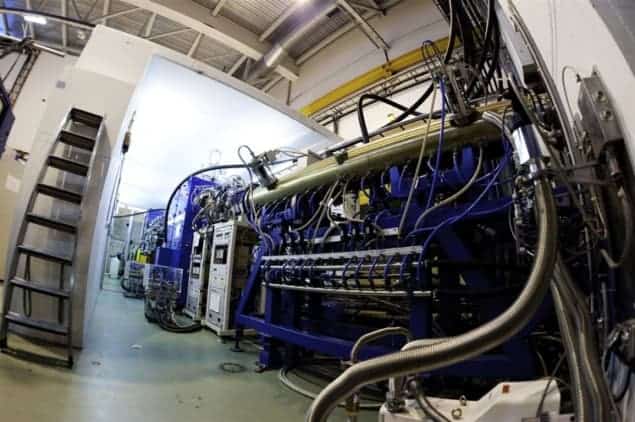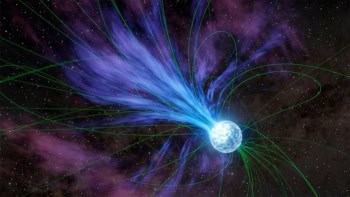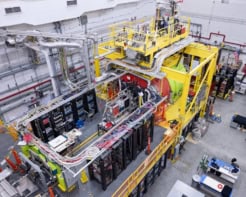
A novel kind of fission reaction observed at the CERN particle physics laboratory in Geneva has exposed serious weaknesses in our current understanding of the nucleus. The fission of mercury-180 was expected to be a “symmetric” reaction that would result in two equal fragments but instead produced two nuclei with quite different masses, an “asymmetric” reaction that poses a significant challenge to theorists.
Nuclear fission involves the splitting of a heavy nucleus into two lighter nuclei. According to the liquid-drop model, which describes the nucleus in terms of its macroscopic quantities of surface tension and electrostatic repulsion, fission should be symmetric. Some fission reactions are, however, asymmetric, including many of those of uranium and its neighbouring actinide elements. These instead can be understood by also using the shell model, in which unequal fragments can be preferentially created if one or both of these fragments contains a “magic” number of protons and/or neutrons. For example, one of the fragments produced in many of the fission reactions involving actinides is tin-132, which is a “doubly-magic” nucleus, containing 50 protons and 82 neutrons.
The latest work, carried out by a collaboration of physicists using CERN’s ISOLDE radioactive beam facility, investigated the interplay between the macroscopic and microscopic components of nuclear fission. It used what is known as beta-delayed fission, a two-step process in which a parent nucleus beta decays and then the daughter nucleus undergoes fission if it is created in a highly excited state. This kind of reaction allows scientists to study fission reactions in relatively exotic nuclei and was first studied at the Flerov Laboratory in Dubna, Russia, about 20 years ago, although the Dubna measurements did not reveal the masses of the fragments produced.
Firing protons at uranium
The experiment at ISOLDE involved firing a proton beam at a uranium target and then using laser beams and a magnetic field to filter out ions of thallium-180 from among the wide variety of nuclei produced in the proton collisions. These ions then became implanted in a carbon foil, where they underwent beta decay and some of the resulting atoms of mercury-180 then fissioned. Silicon detectors placed in front of and behind the foil allowed the energies of the fission products to be measured.
The researchers were expecting the fission reaction to be symmetric, with the mercury-180 splitting into two nuclei of zirconium-90, a result thought to be particularly favoured because these nuclei would contain a magic number of neutrons (50) and a “semi-magic” number of protons (40). What they found, however, was quite different. The energy of the fission products recorded in the silicon detectors did not peak at one particular value, which would be the case if only one kind of nuclei was being produced in the reactions, but instead showed two distinct peaks centred around the nuclei ruthenium-100 and krypton-80.
Collaboration spokesperson Andrei Andreyev of the University of Leuven, Belgium, (and currently at the University of West of Scotland) says that this asymmetric fission was unexpected because the observed fragments do not contain any magic or semi-magic shells. His colleague, theorist Peter Möller of the Los Alamos National Laboratory in the US had in fact devised a model of the nucleus that predicted that mercury-180 would undergo asymmetric fission. But he wasn’t able to explain why that is, having plotted a three-dimensional potential energy surface for the fission of mercury-180 and then identified a minimum in that surface, but he couldn’t identify which of the three variables were responsible for that minimum.
‘Beautiful experimental achievement’
Phil Walker of the University of Surrey in the UK, who is not a member of the collaboration, describes the research as a “beautiful experimental achievement” that has “an impressive theoretical outcome”. He says that the result will be mainly of interest to academics but believes that it might just have practical implications. “Much of our energy generation depends on nuclear fission,” he points out, “and if we want to make reactors safer and cheaper we need to be able to trust the basic theory of the fission process. I would say that the theory has been found to be sadly lacking, and it needs to be fixed.”
Andreyev agrees. “I hope that as a result of our paper theorists will start to think about this problem and tell us what is happening,” he says. “For the moment we don’t know.”
The research appears in Physical Review Letters.



